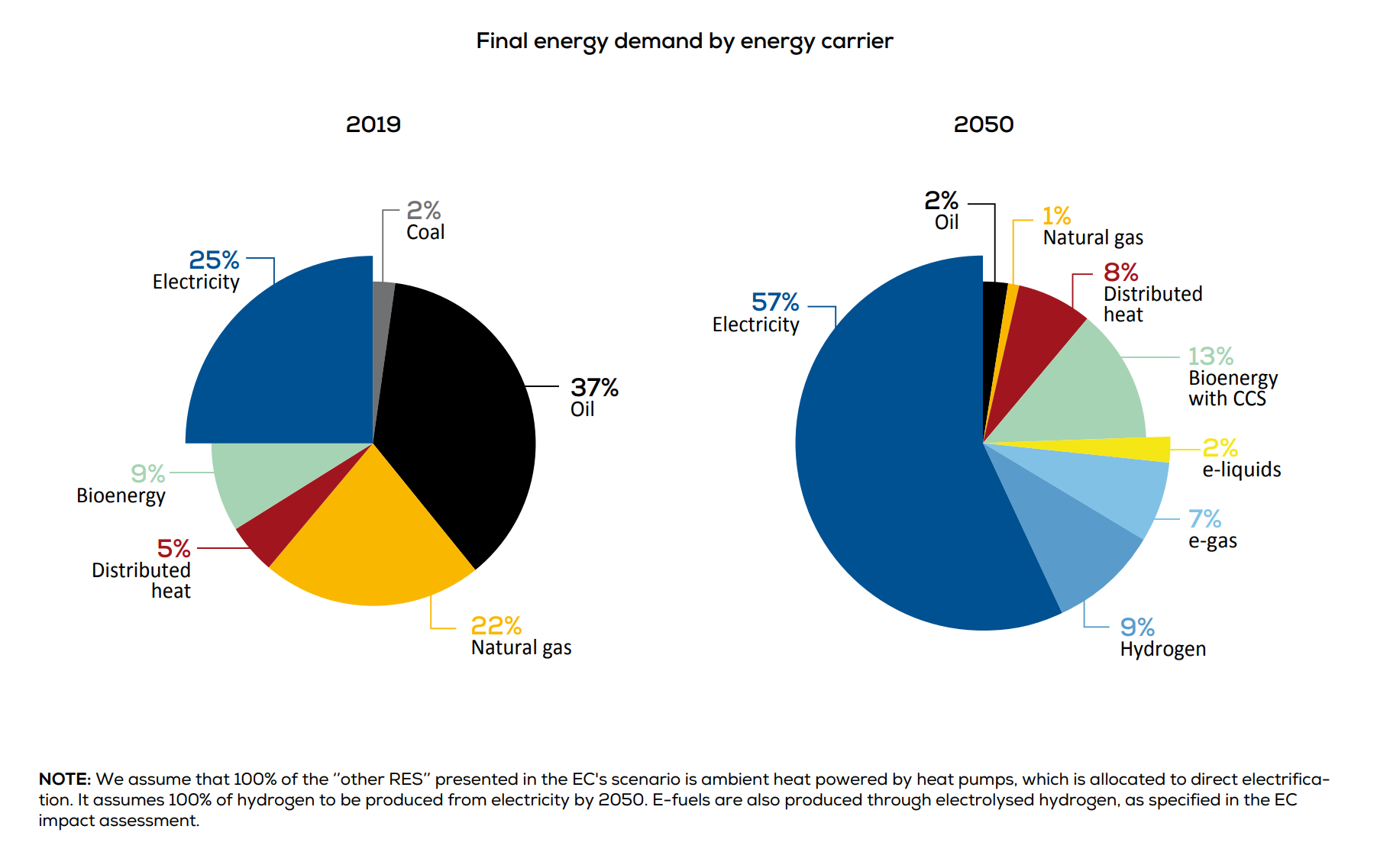Renewable-based electrification of transport, buildings and industrial processes is the most cost-effective and energy efficient way to deliver climate neutrality: Electric Vehicles drive 3 to 4 times the distance with the same amount of energy as compared to internal combustion engine vehicles, and heat pumps are three to five times more energy efficient than traditional fossil fuel boilers.
But electricity accounts for only 25% of Europe’s energy mix today. The European Commission wants electricity to cover at least 30% of final energy demand by 2030 and at least 57% by 2050.

Deep decarbonisation of the economy is possible thanks to electrification. In fact, it will cost no more as a share of GDP than our energy system costs today. And it will dramatically reduce external costs, notably of air pollution, not accounted for today. The technologies that will deliver the bulk of decarbonisation are already available or in development today but need the right market signals to be deployed at scale. Wind energy will be the main driver of renewables-based electrification. According to the European Commission wind will become the no. 1 source of electricity in Europe shortly after 2025. And provide 50% of the EU’s electricity by 2050. Find out more in our report Getting fit for 55 and set for 2050 - Electrifying Europe with wind energy.
In those sectors where direct electrification is not possible for costs or technical reasons, renewables-based indirect electrification, notably renewable hydrogen, will drive decarbonization e.g. in heavy industry (cement, steel, and chemicals), heavy-duty road transport, aviation and shipping.
WindEurope co-founded the Electrification Alliance bringing together 10 sectors driving the electrification agenda, and the Renewable Hydrogen Coalition, a high-level network of start-ups, investors and industrial off-takers dedicated to making Europe the global leader in renewable hydrogen.
To deliver on our 2030 climate and energy targets and set the course for climate neutrality Europe should:
- Unlock a massive supply of competitive renewable electricity by accelerating permitting, having the right auction design to unlock investments and mainstreaming climate in spatial planning.
- Plan for and accelerate the buildout of the infrastructure needed for a net-zero energy system - notably by doubling the rate of investments in electricity grids and accelerating the roll out of e-charging and H2 refuelling infrastructure.
- Send a carbon price signal and adapting taxation to shift away from fossil fuel consumption.
- Drive demand for renewables notably by setting targets for renewable energy consumption in hard to abate sectors, strengthening the CO2 emission performance standards for cars and vans and increasing requirements for renewable and efficient heating in building
- Focus Research & Innovation funding on the technologies that will deliver climate neutrality notably incremental improvements in mature technologies– digitalised operation and maintenance and robotics – and grid integration and optimisation.
Background documents:
- Getting fit for 55 and set for 2050 - Electrifying Europe with wind energy – ETIP Wind and WindEurope, 2021
- Setting the course towards climate neutrality – WindEurope position on the ‘Fit for 55’ package, WindEurope, 2021
- Wind-to-X – a position paper on how to achieve net-zero emissions through a renewable-based electrification, WindEurope 2019

